The Dark Secret Of The Vatican Pagan Gods (1)
By Korben Dallas
I will briefly summarize what’s to follow in this thread which is created in support of my hypothesis that the Ancient Rome is one and the same with the Holy Roman Empire. It appears that Vatican and Rome became visibly Christian only around the middle of the 19th century. The same, most likely, applies for the remainder of European territories. In other words Jesus existed in Europe along the likes of Zeus, Apollo and many other gods until approximately 1850s. It was normal and it looks like we have multiple facts to back it up.
The Scream of Gargoyles

The world famous Notre-Dame de Paris gargoyles, and chimeras were the objects which made me question the Christian nature of the Gothic Cathedrals. While the Notre-Dame de Paris is obviously in France, the same applies to the Italian Gothic Cathedrals as well. As a matter of fact, it probably pertains to all the Gothic Cathedrals out there, for most of them have gargoyles and chimeras present.
The main questions to ask here would be:
• Why do we have gargoyles and chimeras mounted on the allegedly Christian structures?
• What do these symbols of the ancient pagan religions have to do with Christianity?
• How come Vatican gave their consent to have them displayed?
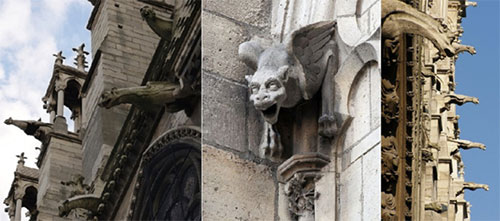
Here is what the official narrative tells us about all those gargoyles and chimeras mounted on the Gothic Cathedrals: “The gargoyles’ main purpose is very practical. As rain water runs down the roofs, it needs to drain off without dripping down the walls and potentially damaging them. By evacuating rain water, the gargoyles protect the cathedral and protect the stone from damage caused by excessive runoff. That is in fact the main difference between gargoyles and chimeras. The former serve to drain rainwater, the latter are purely decorative.”
I do not know about you, but it sounds like a stupid justification for having symbols of other religions present on the allegedly Christian places of warship. Gargoyles and chimeras do not belong to Christianity, look creepy, and do not really project any feelings of love, peace and friendship.
Gothic Cathedrals
Originating in 12th-century France, it (Gothic Architecture) was widely used, especially for cathedrals and churches, until the 16th century. What is the official explanation for naming this style of architecture “Gothic”? Well, here is what we are being told by Wikipedia: “The term ‘Gothic architecture’ originated in the 16th century and was originally very negative, suggesting something barbaric. Giorgio Vasari used the term ‘barbarous German style’ in his 1550 Lives of the Artists to describe what is now considered the Gothic style, and in the introduction to the Lives he attributed various architectural features to ‘the Goths’ whom he held responsible for destroying the ancient buildings after they conquered Rome, and erecting new ones in this style.”
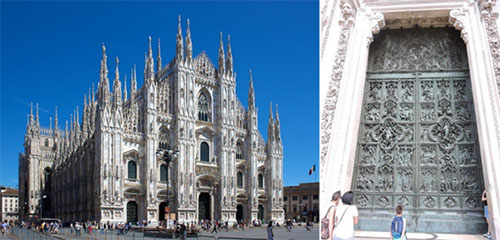
Let’s see. The Goth Germanic people invaded the Roman Empire from the east between the 3rd and 5th centuries. Once you get through all the gibberish in the Wikipedia article, it becomes apparent that after 711 AD the Goth presented no historical significance. Yet, the official narrative has to cover the inconsistencies produced by the made up history. Hence we have the following line:
• In the late 18th century, Gothic tribes who remained in the lands around the Black Sea, especially in Crimea – then known as Crimean Goths – were still mentioned as existing in the region and speaking a Crimean Gothic dialect, making them the last true Goths. The language is believed to have been spoken until as late as 1945. They are believed to have been assimilated by the Crimean Tatars.
• Crimean Goths were the least-powerful, least-known, and the longest-lasting of the Gothic communities.
According to the traditional historical narrative, the Goths were border line non existent after 711 AD. All the damages they allegedly inflicted to Rome were done between the 3rd and 5th centuries AD. Yet, we are expected to believe that some 16th century brainiacs were so mad at some 1,000 year old events, that they started to call this style of architecture “Gothic”.
Simultaneously, there had to be some “least-known” Gothic tribes which survived all the way into the late 18th century, with a Gothic dialect spoken until 1945.
If this explanation (why the style is Gothic) is not fishy, I do not know what is. Sounds like we know nothing about who the Goths really were, and why these style of architecture was called “Gothic”. Even less do we know what any of these cathedrals have to do with Christianity.
Ancient Roman Religion
Religion in Ancient Rome includes the ancestral ethnic religion of the city of Rome that the Romans used to define themselves as a people, as well as the religious practices of peoples brought under Roman rule, in so far as they became widely followed in Rome and Italy. The Romans thought of themselves as highly religious, and attributed their success as a world power to their collective piety in maintaining good relations with the gods. The Romans are known for the great number of deities they honored, a capacity that earned the mockery of early Christian polemicists.
I do not want to get into too many details on the religions present in Ancient Rome. I think the narrative provided a rather satisfactory story line on this one. The most important thing to understand here is summed up in the following official sentences:
• The Roman had their traditional ceremonies and they worshiped Roman gods as well as gods from other provinces and city states.
• Romans worshiped gods from Babylon, Persia, Europe and Egypt. Those stationed in remote provinces often worshiped local gods.
In other words, there were multiple religions present in the Ancient Rome. The last year attributed to the Ancient Rome in Europe is 476 AD. What are the odds of the same multitude of various faiths to exist in the “Renaissance” driven Holy Roman Empire of 15th – 19th centuries. Well, may be a bit more than we thought.
Roman Inquisition
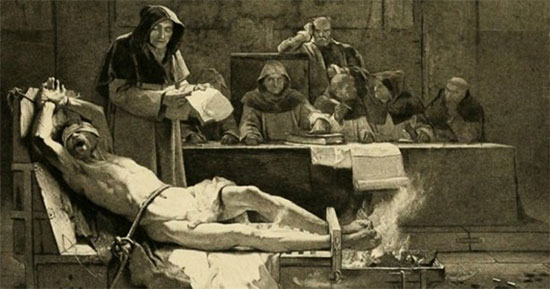
The Roman Inquisition, was a system of tribunals developed by the Holy See of the Roman Catholic Church, during the second half of the 16th century, responsible for prosecuting individuals accused of a wide array of crimes relating to religious doctrine or alternate religious doctrine or alternate religious beliefs. In the period after the Medieval Inquisition, it was one of three different manifestations of the wider Catholic Inquisition along with the Spanish Inquisition and Portuguese Inquisition.
Like other iterations of the Inquisition, the Roman Inquisition was responsible for prosecuting individuals accused of committing offenses relating to heresy, including Protestantism, sorcery, immorality, blasphemy, Judaizing and witchcraft; as well as for censorship of printed literature. After 1567, with the execution of Pietro Carnesecchi, an allegedly leading heretic, the Holy Office moved to broaden concerns beyond that of theological matters, such as magic, witchcraft, superstitions, and cultural morality. However, the treatment was more disciplinary than punitive.
The tribunals of the Roman Inquisition covered most of the Italian peninsula as well as Malta and also existed in isolated pockets of papal jurisdiction in other parts of Europe, including Avignon, a papal enclave within the territory of France. The Roman Inquisition, though, was considerably more bureaucratic and focused on pre-emptive control in addition to the reactive judicial prosecution experienced under other iterations.
Basically we all think that we know what the purpose of inquisitions was: If you deviate from the accepted church doctrine – you are toast. Even altered versions of Christianity were allegedly prosecuted by the Church. We are talking about monotheistic Christianity here. What do you think was supposed to happen to those who supported polytheistic religions in the 16th century?
Ivan the Terrible and Antonio Possevino
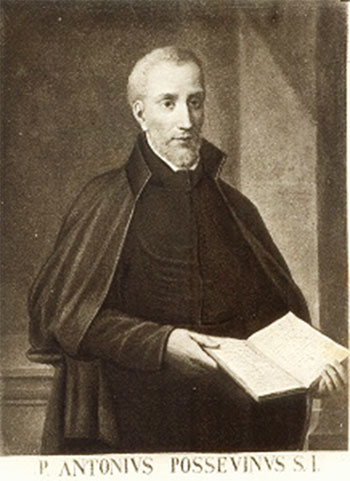
We all know who Ivan the Terrible was. He was born in 1530 and died in 1584. What religion was the only possible religion in Vatican during the years attributed to Ivan the Terrible? You are totally justified in thinking that it was Christianity, but was it really so? To answer this question we will have to get familiarized with a certain Jesuit named Antonio Possevino.
Antonio Possevino (1533 – 1611) was a Jesuit protagonist of Counter Reformation as a papal diplomat and a Jesuit controversialist, encyclopedist and bibliographer. He acted as papal legate and the first Jesuit to visit Moscow, vicar general of Sweden, Denmark and northern islands, Muscovy, Livonia, Rus, Hungary, Pomerania, Saxony between 1578 and 1586.
“Antonio Possevino, a Jesuit monk, theologian, scholar, and papal envoy, arrived at Moscow on February 14, 1582. At that time the Russian Tsar Ivan IV sought the pope’s mediation in the cause of peace with Stephen Báthori, the King of Poland. Possevino was sent by the Pope Gregory XIII as his legate. With the permission of Ivan IV he conducted a public dispute about the matters the faith, trying to convert Ivan IV to Roman Catholicism. The Tsar was so infuriated that he almost killed Possevino. He left Moscow laden with honors but not deceived as to the success of his efforts. Possevino wrote several very interesting treatises on Russia, including Moscovia, rich of factual material and astute observations, and the less known Missio Moscovitica” explains Wikipedia.
We have this interesting discussion between Ivan the Terrible and Antonio Possevino, which allegedly took place in 1582 AD. The prince is Ivan the Terrible.

To which Antonio Possevino replied with the following:

The above is the translation (p. 69-70) of the below excerpt from Vita Del P. Antonio Possevino Della Compagnia Di Gesu. I used image translating services to verify the translation from Italian. I think Ivan the Terrible mentioned sixty faiths in the original. I also understood that translating images is not my piece of pie.
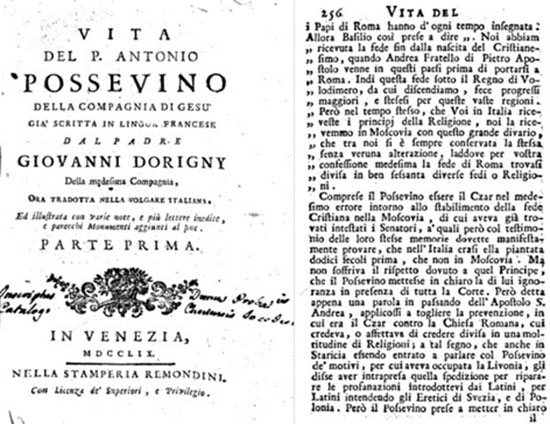
Read the second part of the article
yogaesoteric
April 4, 2020
